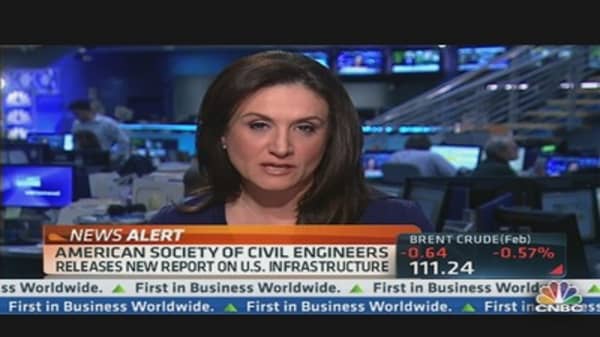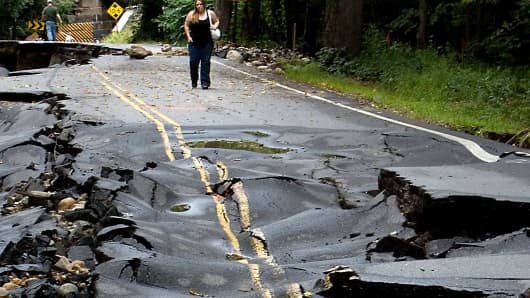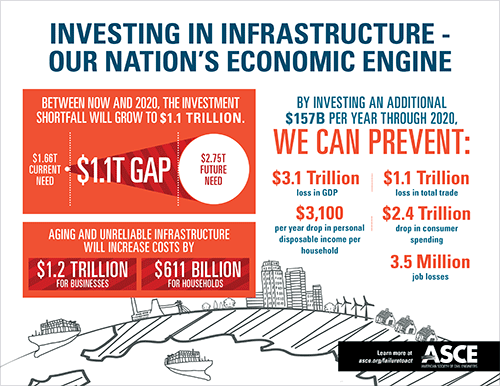The decrepit state of the nation's infrastructure will knock more than $3 trillion off the nation's gross domestic product through the end of the decade if more money isn't spent to upgrade the country's roads, bridges, airports and ports, according to a new report from the American Society of Civil Engineers.
Based on current trends in the U.S., ASCE estimates the infrastructure investment needs will total $2.7 trillion, and yet they estimate only $1.6 trillion will be spent, leading to an investment gap of $1.1 trillion.
(Read More: The Great Regression of America's Infrastructure.)
The biggest gap in funding is in surface transportation, in other words roads and bridges, which will need a whopping $846 billion. Airports will need $39 billion, and marine ports and waterways will need $16 billion. The costs are measured in terms of such things as unreliable transportation services, and less reliable water and electricity.
The impact from not filling that investment gap means $484 billion fewer in exports, and $1.1 trillion in lost total trade. That, in turn, leads to 3.5 million fewer jobs than would otherwise be created, the report said.
"If we don't invest now, Americans pay more in the long run," said Gregory DiLoreto, president of the American Society of Civil Engineers.
(Read More: Norman Mineta: Better Infrastructure is Essential to American Economic Prosperity.)
In some cases, the answer is simply more money; but not always. When it comes to the electrical grid, it's the regulatory overhang that is preventing more rapid improvement, said Jim Hoecker, former Federal Energy Regulatory Commission chairman and now counsel and advisor to WIRES, a non-profit trade association that promotes investment in the electrical transmission system.
"What's keeping us from doing it? In the case of electrical transmissions, it's not a lack of government funding—our grid is largely privately financed," he said. "[But] if you want to build a transmission line, you need to have a good deal of patience and money just to get through the permitting process."
It's not unheard of for permitting to take decades. One 90 mile stretch of transmission lines originating in West Virginia took 16 years from concept to finally pumping energy through it because they were laid through U.S. Forest Service lands.
The regulatory framework is an artifact from a different time when utilities were largely local businesses and grids were not interconnected. But now they are. Still, numerous regulatory agencies at the state level, regional level, and federal level are involved in the process, requiring tremendous coordination and time.
—By CNBC's Michelle Caruso-Cabrera; Follow her on Twitter: @MCaruso_Cabrera






